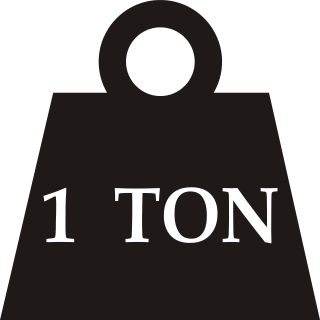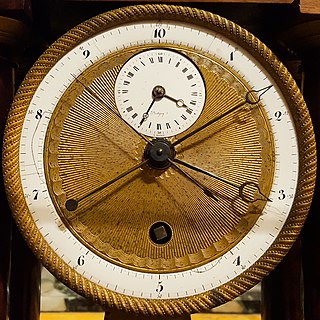
A minute of arc, arcminute (arcmin), arc minute, or minute arc, denoted by the symbol ′, is a unit of angular measurement equal to 1/60 of one degree. Since one degree is 1/360 of a turn, or complete rotation, one arcminute is 1/21600 of a turn. The nautical mile (nmi) was originally defined as the arc length of a minute of latitude on a spherical Earth, so the actual Earth circumference is very near 21600 nmi. A minute of arc is π/10800 of a radian.

Erlang is a general-purpose, concurrent, functional high-level programming language, and a garbage-collected runtime system. The term Erlang is used interchangeably with Erlang/OTP, or Open Telecom Platform (OTP), which consists of the Erlang runtime system, several ready-to-use components (OTP) mainly written in Erlang, and a set of design principles for Erlang programs.
The erlang is a dimensionless unit that is used in telephony as a measure of offered load or carried load on service-providing elements such as telephone circuits or telephone switching equipment. A single cord circuit has the capacity to be used for 60 minutes in one hour. Full utilization of that capacity, 60 minutes of traffic, constitutes 1 erlang.

Horsepower (hp) is a unit of measurement of power, or the rate at which work is done, usually in reference to the output of engines or motors. There are many different standards and types of horsepower. Two common definitions used today are the imperial horsepower, which is about 745.7 watts, and the metric horsepower, which is approximately 735.5 watts.

Ton is any of several units of measure of mass, volume or force. It has a long history and has acquired several meanings and uses.
Network throughput refers to the rate of message delivery over a communication channel, such as Ethernet or packet radio, in a communication network. The data that these messages contain may be delivered over physical or logical links, or through network nodes. Throughput is usually measured in bits per second, and sometimes in data packets per second or data packets per time slot.
Specific impulse is a measure of how efficiently a reaction mass engine, such as a rocket using propellant or a jet engine using fuel, generates thrust.
In telecommunication engineering, and in particular teletraffic engineering, the quality of voice service is specified by two measures: the grade of service (GoS) and the quality of service (QoS).
In telecommunication networks, traffic intensity is a measure of the average occupancy of a server or resource during a specified period of time, normally a busy hour. It is measured in traffic units (erlangs) and defined as the ratio of the time during which a facility is cumulatively occupied to the time this facility is available for occupancy.

In UNIX computing, the system load is a measure of the amount of computational work that a computer system performs. The load average represents the average system load over a period of time. It conventionally appears in the form of three numbers which represent the system load during the last one-, five-, and fifteen-minute periods.
Quality of service (QoS) mechanism controls the performance, reliability and usability of a telecommunications service. Mobile cellular service providers may offer mobile QoS to customers just as the fixed line PSTN services providers and Internet service providers may offer QoS. QoS mechanisms are always provided for circuit switched services, and are essential for non-elastic services, for example streaming multimedia. It is also essential in networks dominated by such services, which is the case in today's mobile communication networks.

Decimal time is the representation of the time of day using units which are decimally related. This term is often used specifically to refer to the French Republican calendar time system used in France from 1794 to 1800, during the French Revolution, which divided the day into 10 decimal hours, each decimal hour into 100 decimal minutes and each decimal minute into 100 decimal seconds, as opposed to the more familiar standard time, which divides the day into 24 hours, each hour into 60 minutes and each minute into 60 seconds.
In telecommunications, busy-hour call attempts (BHCA) is a teletraffic engineering measurement used to evaluate and plan capacity for telephone networks. BHCA is the number of telephone calls attempted at the sliding 60-minute period during which occurs the maximum total traffic load in a given 24-hour period (BHCA), and the higher the BHCA, the higher the stress on the network processors. BHCA is not to be confused with busy hour call completion (BHCC) which measures the throughput capacity of the network. If a bottleneck in the network exists with a capacity lower than the estimated BHCA, then congestion will occur resulting in many failed calls and customer dissatisfaction.
Network traffic or data traffic is the amount of data moving across a network at a given point of time. Network data in computer networks is mostly encapsulated in network packets, which provide the load in the network. Network traffic is the main component for network traffic measurement, network traffic control and simulation.
The units of measurement in transportation describes the unit of measurement used to express various transportation quantities, as used in statistics, planning, and their related applications.
Overall equipment effectiveness (OEE) is a measure of how well a manufacturing operation is utilized compared to its full potential, during the periods when it is scheduled to run. It identifies the percentage of manufacturing time that is truly productive. An OEE of 100% means that only good parts are produced, at the maximum speed, and without interruption.
Passengers per hour per direction (p/h/d), passengers per hour in peak direction (pphpd) or corridor capacity is a measure of the route capacity of a rapid transit or public transport system.
The watt is the unit of power or radiant flux in the International System of Units (SI), equal to 1 joule per second or 1 kg⋅m2⋅s−3. It is used to quantify the rate of energy transfer. The watt is named in honor of James Watt (1736–1819), an 18th-century Scottish inventor, mechanical engineer, and chemist who improved the Newcomen engine with his own steam engine in 1776. Watt's invention was fundamental for the Industrial Revolution.
In the mathematical theory of probability, offered load is a concept in queuing theory. The offered load is a measure of traffic in a queue. The offered load is given by Little's law: the arrival rate into the queue multiplied by the mean holding time, equals the average amount of time spent by items in the queue. Offered load is expressed in Erlang units or call-seconds per hour, a dimensionless measure.





